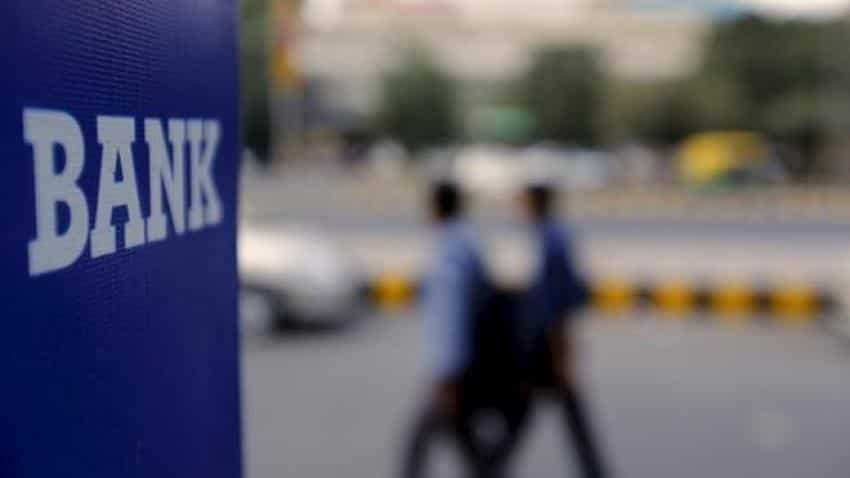Banks stare at $38 bn new dud loans from power sector: Report
The report is based on the fact that as much as 71 gigawatt (gw) of private sector coal-based projects are facing bankruptcy filings at various NCLTs, implying probable resolution from June 2019 and it expects an average 75 per cent write-off in these loans. Of the USD 178 billion loan, the distribution companies have USD 65 billion, generation companies have USD 77 billion, and transmission firms have a debt burden of USD 36 billion, says the report penned by BofA-ML research analysts Amish Shah and Sriharsh Singh.

The banking sector, which is already reeling under a mammoth pile of bad loans, is looking at potential dud assets of USD 38 billion from the power sector, as USD 53 billion of the USD 178 billion bank loans to the sector are already stressed, said a report. "Of the USD 178 billion (around Rs 11.7 trillion) of debt of the power sector, USD 53 billion (around Rs 3.5 trillion) are already under stress (primarily to the generation sector) and of this, as much as USD 38 billion (around Rs 2.5 trillion) have the potential of being written- off as bad loans," the Bank of America-Merrill Lynch report said today.
The report is based on the fact that as much as 71 gigawatt (gw) of private sector coal-based projects are facing bankruptcy filings at various NCLTs, implying probable resolution from June 2019 and it expects an average 75 per cent write-off in these loans. Of the USD 178 billion loan, the distribution companies have USD 65 billion, generation companies have USD 77 billion, and transmission firms have a debt burden of USD 36 billion, says the report penned by BofA-ML research analysts Amish Shah and Sriharsh Singh.
Of the USD 53 billion of stressed loans, as much as USD 50 billion are to the generation sector alone, says the report, adding loans to the distribution sector, which were earlier stressed, are now better off given quasi-state guarantees and restructuring under the government's Ujwal Discom Assurance Yojana (Uday) scheme.
Of this USD 178 billion debt mountain, banks have the largest at 53 per cent of the total loans, followed by non-banking finance companies (NBFCs) at 35 per cent and the balance from the states. About 43 per cent of loans are extended to the power generation sector, followed by distribution at 37 per cent and transmission at 20 per cent, the report said.
It can be noted that the power, steel, roads, mining and telecom sectors are the most stressed accounts for banks whose bad loan burden has crossed Rs 11 trillion or 10.5 per cent of the system as of December 2017.
The report further notes that the USD 116-billion national power utilities lose around USD 9 billion annually but can turnaround without hiking consumer tariffs and also continue to offer the present average subsidy of 2 per cent if the many of its cost-inefficiencies are resolved.
It also states that tariff hikes are not the way forward for the sector to turnaround as already tariffs for industrial and commercial consumers, who constitute 37 per cent of demand, are very high compared to its regional peers. But the report is critical of the reforms introduced to address inefficiencies saying they expect limited progress.
As per the report, of the USD 116 billion expenditure incurred by power distributors annually (as of March 2016 - the latest available data for national distributors), 54 per cent is related to operations and maintenance/other expenses across the value chain (administration costs, employee expenses, taxes, marginal profits etc), fuel comprises only 20 per cent of the cost, borrowing cost is only 19 per cent and freight charges are at a low 7 per cent.
And surprisingly subsidies to farmers constitute only 2 per cent of the cost of the states on a national level barring for Punjab and Haryana where its 7-8 per cent. Farmers are the second biggest consumer segment for the discoms with 22 per cent of total power consumption as agricultural power tariff is only Rs 1.7 per kilowatt hour (kWh) against the cost of Rs 6.3 per kwh.
Though some states provide free power to farmers, the expenses are paid by the respective states to distributors from their annual budgets. "Our analysis suggests, while at the national level, power subsidy comprises 2 per cent of all states' annual expenditure, but for Punjab and Haryana, it 7-8 per cent," says the report.
Watch this Zee Business video
The sector has a USD 5 billion import bill as one-sixth of the fuel needs are met by imports. For power generation companies, this comprises USD 24 billion in annual costs, while coal accounts for 87 per cent of this cost. Besides, USD 4 billion of such fuel is imported which is around 5 per cent the country's non-oil and non-gold imports), comprising USD 3 billion of coal and USD 1 billion of LNG.
Get Latest Business News, Stock Market Updates and Videos; Check your tax outgo through Income Tax Calculator and save money through our Personal Finance coverage. Check Business Breaking News Live on Zee Business Twitter and Facebook. Subscribe on YouTube.
06:59 PM IST











 Banks should adopt 'bottom-up' approach for preparing credit plan: RBI's Swaminathan
Banks should adopt 'bottom-up' approach for preparing credit plan: RBI's Swaminathan Post Office Savings Scheme: How to open account with minimum deposit of Rs 500
Post Office Savings Scheme: How to open account with minimum deposit of Rs 500 Banks to conduct periodic performance review of empanelled advocates to fast-track cases in DRTs
Banks to conduct periodic performance review of empanelled advocates to fast-track cases in DRTs Indian Overseas Bank saw its market capitalization nearly double during July-Sep quarter
Indian Overseas Bank saw its market capitalization nearly double during July-Sep quarter Banks to begin reporting on new data warehouse CIMS: Shaktikanta Das
Banks to begin reporting on new data warehouse CIMS: Shaktikanta Das